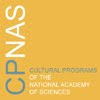to return to main page go to www.visualcultureandbioscience.org
SESSION ONE: IMAGING IN ART AND SCIENCE
From: Oron Catts
Date: Mon, 5 Mar 2007 12:02:54 -0500 (EST)
Hi all
Need to be quite telegraphic today as we are preparing for a livinginstallation tomorrow; interestingly enough the installation is in a politicalcontext that explores issues concerning artists transgressing the boundaries of art and other practices.
As for the answers:
1) What role do picturing practices play in your discipline of “knowledgeproduction?”
Working for the last eleven years with the use of tissue technologies as amedium for artistic expression I moved away from the notion of picturing whatwe do (representation) to showing what we do (presentation and in some casesdocumentation). I also (in a somewhat simplistic way) do not believe that as an artist working in this area I am involved in “knowledge production”, butrather, I am involve in (sometimes futile) exercise of “meaningproduction.” The new knowledge I engage with (as you will see below) ismostly already there, the question may be; what does this knowledge mean to the rest of us? Artists use different strategies to deal with the very radical shifts in ourperceptions of life which are presented to us through the life sciences andtheir technological applications. Catharine mentioned Patricia Pecinini whochooses to fabricate fantastical scenarios (that in a sense can only comethrough the use of (mis) representation techniques) while my own practice deals with the direct use and engagement with the tools and techniques of a specificbranch of the life sciences. What I presume we share (with many other artistsin this field) is a desire to make sense of what we are confronted with bymaking it strange.
2) How have your perceptions and attitudes of mind been challenged by currentdialogues within the “Art-Sci” arenas?
As mentioned above much of what I find challenging is the radical shifts inwhat we are coming to know about life through science and more importantly theradical actualities that are been executed on life though the way thisknowledge is been applied (technology). Working with fragments of complexorganisms required me to reassess constantly my perceptions of the body, lifeand its classifications. Even though I work with “science,” I see my workmore to do with life then with “Art-Sci”. Actually, I am quite concernabout much of the rhetoric surrounding the Art-Sci arenas but I will keepmy thought about this issue for a later stage of the symposium.
3) What role have new imaging technologies played in your conceptualizations ofvisual modeling or artistic application?
As mentioned above, my practice moves away from imaging technologies as(regardless of the newness) are still very much constrained by the fabricationof representation. The concern is that in many cases these imaging technologies are presented as reality (whatever this mean) in particular when they arepresented by scientists, but often also by artists.
Oron Catts
Artistic Director SymbioticA-The Art & Science Collaborative Research Laboratory.
School of Anatomy & Human Biology.
University of Western Australia
www.symbiotica.uwa.edu.auwww.tca.uwa.edu.au
to comment on this post, click on "comments" below
to return to main page go to www.visualcultureandbioscience.org
Subscribe to:
Post Comments (Atom)

No comments:
Post a Comment